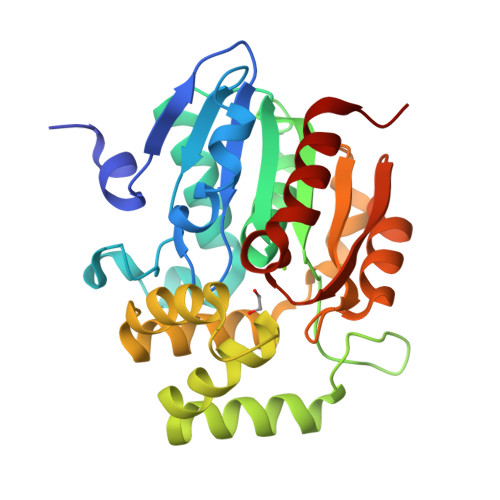Structural analysis of HTL and D14 proteins reveals the basis for ligand selectivity in Striga.
Xu, Y., Miyakawa, T., Nosaki, S., Nakamura, A., Lyu, Y., Nakamura, H., Ohto, U., Ishida, H., Shimizu, T., Asami, T., Tanokura, M.(2018) Nat Commun 9: 3947-3947
- PubMed: 30258184
- DOI: https://doi.org/10.1038/s41467-018-06452-2
- Primary Citation of Related Structures:
5Z7W, 5Z7X, 5Z7Y, 5Z7Z - PubMed Abstract:
HYPOSENSITIVE TO LIGHT (HTL) and DWARF14 (D14) mediate the perception of karrikin and strigolactone, which stimulates germination of the parasitic weed Striga. However, their role in parasitic seeds is poorly understood, and the basis for their differing responsiveness remains unclear. Here, we show that Striga hermonthica HTL proteins (ShHTLs) in 'conserved' and 'intermediate' clades are able to bind karrikin. The 'divergent' clade is able to hydrolyze strigolactone. Unexpectedly, we find that ShD14 is also capable of hydrolyzing strigolactone. Through comparative analysis of ShHTLs and ShD14 crystal structures, we provide insights into the basis for their selectivity. Moreover, we show that both ShD14 and divergent clade ShHTLs, but not conserved and intermediate clade ShHTLs, can interact with the putative downstream signaling component ShMAX2 in the presence of the synthetic strigolactone, rac-GR24. These findings provide insight into how strigolactone is perceived and how ligand specificity is determined.
Organizational Affiliation:
Department of Applied Biological Chemistry, Graduate School of Agricultural and Life Sciences, The University of Tokyo, 1-1-1 Yayoi, Bunkyo-ku, Tokyo, 113-8657, Japan.


















